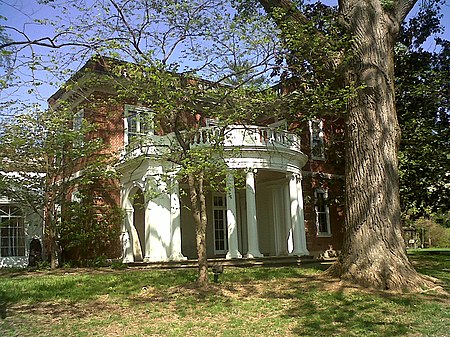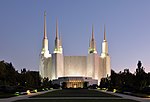Woodend (Chevy Chase, Maryland)
Chevy Chase (CDP), MarylandColonial Revival architecture in MarylandGeorgian Revival architecture in MarylandHouses completed in 1928Houses in Montgomery County, Maryland ... and 9 more
Houses on the National Register of Historic Places in MarylandJohn Russell Pope buildingsMaryland protected area stubsMontgomery County, Maryland geography stubsNational Register of Historic Places in Montgomery County, MarylandNature centers in MarylandNature reserves in MarylandProtected areas of Montgomery County, MarylandWashington metropolitan area, Maryland Registered Historic Place stubs

Woodend is a historic home located in the Montgomery County, Maryland, town of Chevy Chase. This Georgian Revival house was built by Chester and Marion Wells in 1927–1928, and owned by the Audubon Naturalist Society of the Central Atlantic States. It is a 2+1⁄2-story house with Flemish bond brick walls and brick quoins. The house was designed by John Russell Pope.The society maintains the Woodend Nature Sanctuary on the 40-acre (16 ha) property, which is open to the public. It was listed on the National Register of Historic Places in 1980.
Excerpt from the Wikipedia article Woodend (Chevy Chase, Maryland) (License: CC BY-SA 3.0, Authors, Images).Woodend (Chevy Chase, Maryland)
Jones Mill Road,
Geographical coordinates (GPS) Address Phone number Website Nearby Places Show on map
Geographical coordinates (GPS)
| Latitude | Longitude |
|---|---|
| N 39.0025 ° | E -77.066944444444 ° |
Address
Woodend Nature Sanctuary
Jones Mill Road 8940
20895
Maryland, United States
Open on Google Maps




